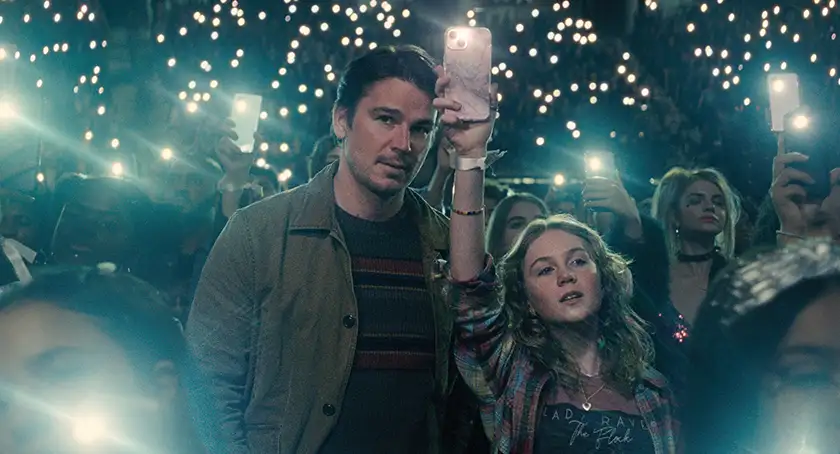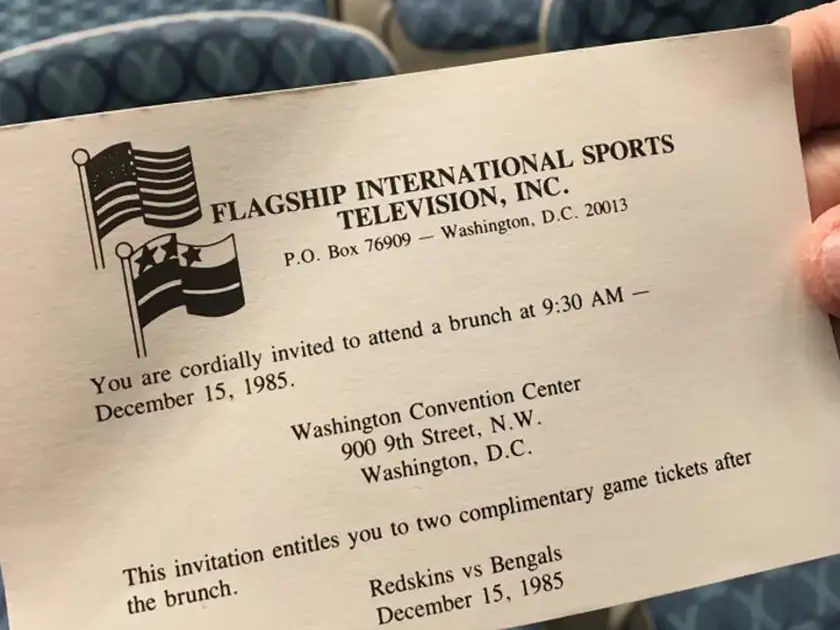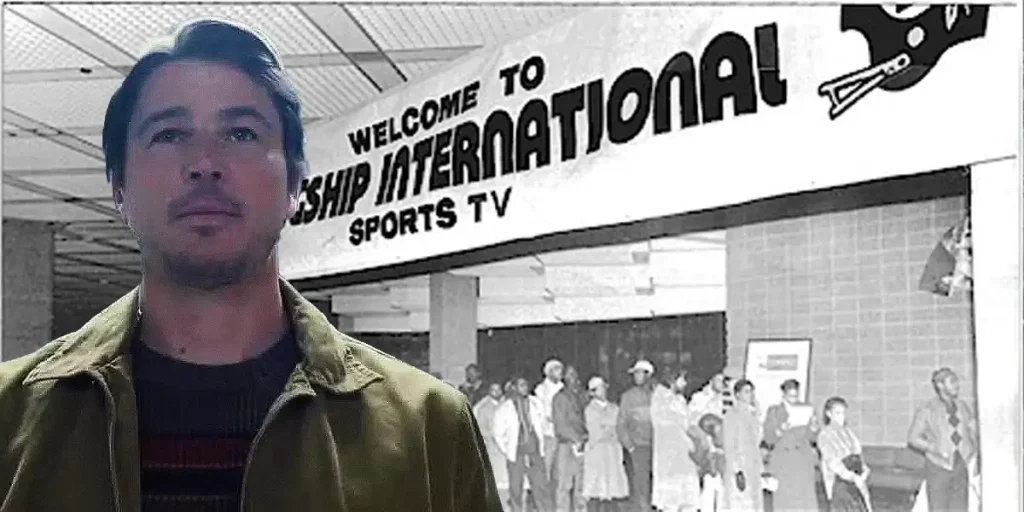Shyamalan’s newest psychological thriller catches serial killer The Butcher in the ultimate American mouse trap. Check out the wild, true story that inspired Trap.
M. Night Shyamalan’s latest psychological thriller has certainly done what a good M. Night film should do: capture audience attention and pique their curiosity. And Trap does exactly that not only in its storytelling and magnificent introduction to serial killer The Butcher but also in its depiction of a real-life ultimate American mouse trap. Here’s a look at the wild, true story that inspired Trap.
What is Trap about?
In essence, Trap is about a clever setup that induces a rapid-fire psychological playout amidst secrecy. Our story follows an unforgettable night in the lives of Cooper Abbott (Josh Hartnett, of Oppenheimer) and his teenage daughter Riley (Ariel Donoghue, of Wolf Like Me). For all intents and purposes, they’re normal family people. But Cooper, a smooth-talking, broad-shouldered Philadelphia firefighter, has a big secret: He’s walking a very fine line in his precarious balancing act of living a double life. By day, he’s a loving husband and father, a firefighter … picture perfect. By night, he’s a demented serial killer known as The Butcher. There is no question, though: His daughter is the center of his world, and their relationship is the heart of this movie.
When we meet Cooper, he’s attending a pop concert with Riley. In some awkwardly endearing moments, he connects with his daughter by attempting to engage in teen slang and support her through some recent girl drama with her friends. By all accounts, Cooper appears to be a good man, a family man … someone you’d trust. But when no one is looking, he pulls up a surveillance camera on his phone and is pleased to see his latest victim, a weeping man, chained up in a basement. Clearly, Cooper is creepy.
As the father-daughter duo settle in for the concert, Cooper notices an array of law enforcement officials at every entrance, like something is going on. So, he works his charm on a t-shirt vendor, who spills the beans that the whole concert is a setup to catch The Butcher. It’s all just one big ole trap. On the outside, Cooper remains cool and calm … laughs, even. Inside, though, we can see his wheels turning amongst giant blinking red letters that read OH SHIT.

While making every effort to fully enjoy the concert with his daughter, Cooper also makes triple the effort to effortlessly walk the tightrope between normal, loving family man and calculating, clever escape artist/serial killer. And let me just tell you, if you haven’t seen this movie yet, you should; Josh Hartnett owns his role here like a boss, particularly as the world seems to close in around him. His nuanced performance is creepy, calculating, and 100% entertaining. Is The Butcher on the level with the Beast, David Dunn, and Elijah Price? Maybe. That’s still yet to be determined. I think there’s a lot more to The Butcher than what Shyamalan gives us here. The entire time I watched this movie, I couldn’t help but wonder if he was subtly introducing us to his next character.
Was The Butcher a real serial killer?
While there was, indeed, a serial killer known as the Butcher Baker, this is not who Josh Hartnett portrayed in Trap. In fact, The Butcher is not based on any one particular serial killer. The Butcher Baker operated in Anchorage, Alaska, between 1972 and 1983, and his focus was on abducting, raping, and murdering women. Many of the women he abducted he then released into the wilderness so he could hunt them with a Ruger Mini-14 and hunting knives. The Butcher Baker, aka Robert Christian Boes Hansen, was captured in 1983 and sentenced to 461 years’ imprisonment without the possibility of parole. He died in 2014 of natural causes.
So, while M. Night Shyamalan’s/Josh Hartnett’s Butcher isn’t based on a real-life serial killer, it’s fair to say he is an amalgamation of sorts, and he’s one who piques our curiosity and leaves us wanting to know more about him and what’s’ coming next. With any luck, we’ll find out.
Fingers crossed.
The wild, true story that inspired Trap
Trap is loosely based on a series of wildly daring and remarkable real-life police operations from the 1980s, but it pulls mostly from the ultimate American mouse trap known as Operation Flagship.
In 1985, America’s streets were overrun with more criminals than a Purge movie. Robbers, muggers, arsonists, drug dealers, and rapists who’d skipped bail were lying low in hideout heaven. Because the arm of the law wasn’t long enough to scoop all of them up in one fell swoop, the U.S. Marshal Department devised a plan and came up with what they called F.I.S.T., or the Fugitive Investigative Strike Team.
In New York City, officers invented a courier service to lure criminals with the promise of a “valuable” package that needed picking up. In Buffalo, New York, they devised a scheme notifying fugitives of substantial lottery winnings of up to $10,000. In Hartford, Connecticut, younger felons were targeted with the promise of a VIP experience at a Boy George concert, complete with dinner and limo service. Two things criminals who get caught have in common are greed and stupidity, so when they showed up to collect their “prizes”, officers swooped in and did their thing.
Across nine major operations, F.I.S.T. captured more than 15,000 fugitives in a range of creative stings spanning from California to New York and down to the Caribbean. The most famous—and by far the most audacious—operation, though, was Operation Flagship, and it is what truly inspired the movie Trap.

In December 1985, the U.S. Marshals Service orchestrated Operation Flagship at the Washington Convention Center in Washington, D.C. It involved sending invitations to fugitives across Washington, D.C. under the guise of winning free tickets to a Washington Redskins football game. Invitations were sent under the name of Flagship International Sports Television, a fictional cable TV network, and the fugitives were told they were selected from a clearinghouse list to receive tickets to the game, bus transportation, and a brunch. They were also offered a chance to win 1986 Redskins season tickets and tickets to the 1986 Super Bowl.
Marshals had fun with this sting, signing invitation letters with names like “I. Michael Detnaw”—”wanted” spelled backwards. When the fugitives called the hotline to verify their invite and confirm their attendance, an operator would redirect them to Flagship’s business manager, “Mr. Cran”—“narc” spelled backwards, and when they were put on hold, the song “I Fought the Law” played in the background.
When gameday arrived, the Washington Convention Center was staffed with 166 undercover officers posing as cheerleaders, ushers, caterers, and cleaning personnel. One officer even dressed up as a chicken, while others held balloon bunches or played tourists with camcorders.
Once all gullible attendees were in their seats, chief of enforcement operations for the U.S. Marshal Service took the stage in top hat and tails to welcome them, then arrest them. It’s reported that just a few seconds into his speech, he uttered the codeword “surprise” and 25 heavily armed SWAT officers burst in and surrounded the fugitives.
In the end, the sting led to a total of 144 captures and arrests of wanted fugitives in what became one of the largest and most successful mass arrests in United States history.
Trap is now available to watch on digital and on demand and is streaming exclusively on HBO Max (US).

